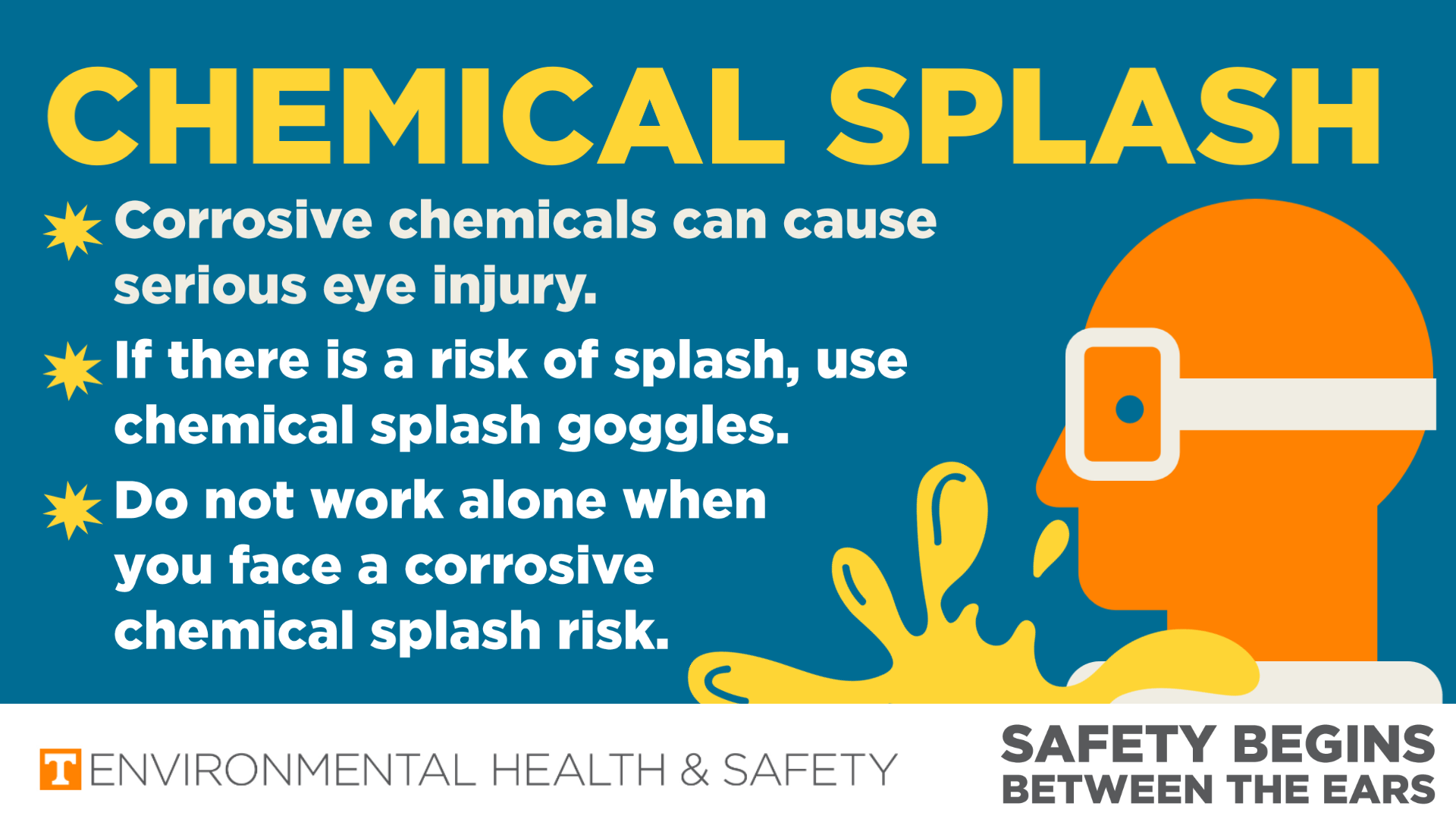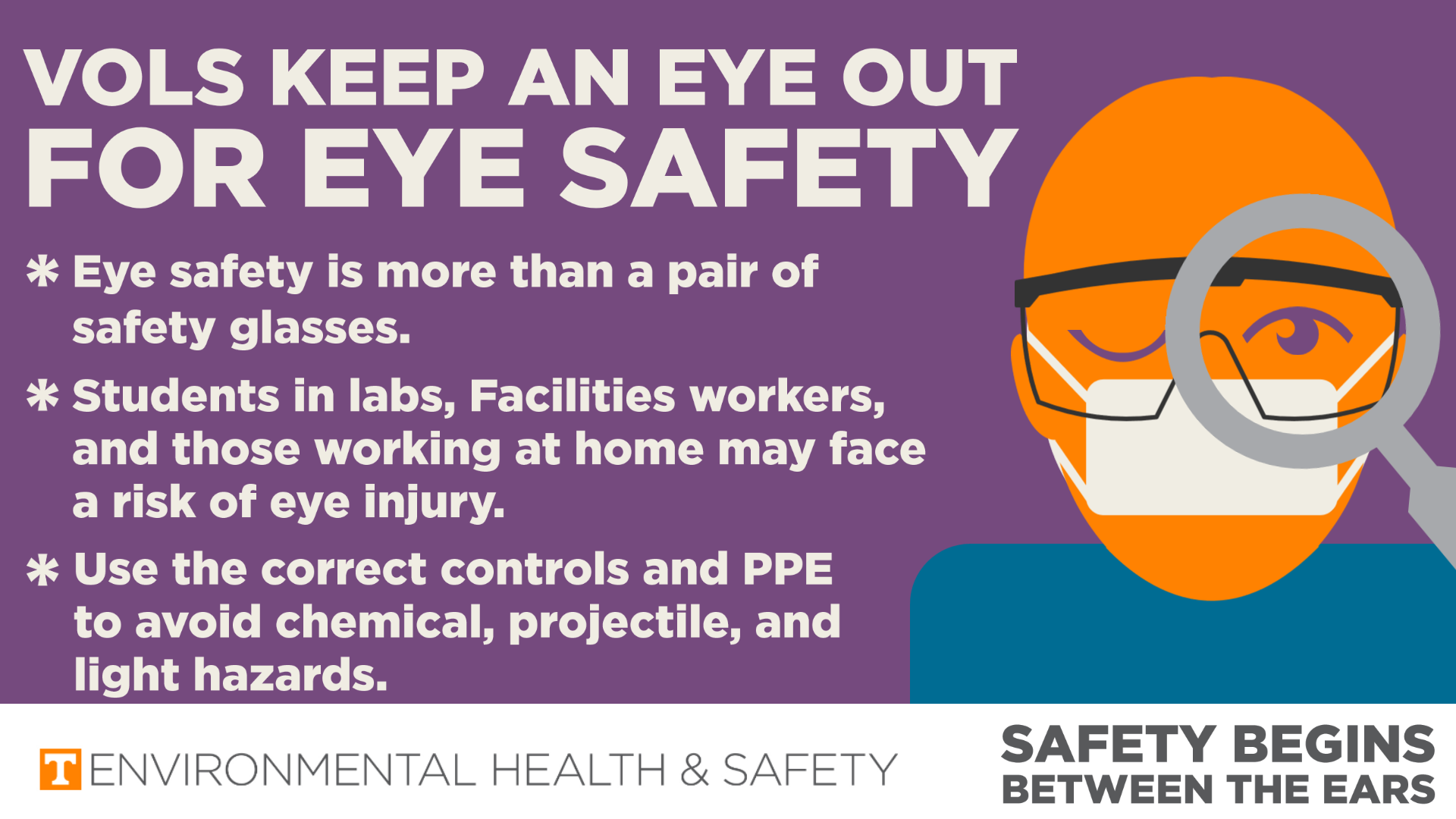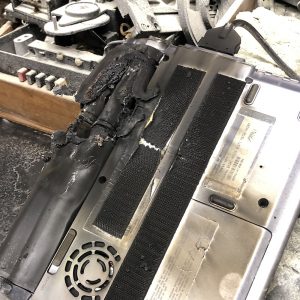Chemical splash risks can occur in many situations. Those at risk include anyone that uses or is exposed to materials that can cause eye injury. This includes:
- Researchers in wet/chemical labs
- Facilities Services workers working with corrosive chemicals
- Anyone else working with corrosive chemicals.

What are corrosive chemicals?
 The word corrosive refers to a chemical that can cause skin corrosion or burns, eye damage, or is corrosive to metals. They can be acids, oxidizers, or bases. When they come in contact with a surface, the surface deteriorates. The deterioration can happen in seconds to minutes, such as concentrated hydrochloric acid spilled on skin; or slowly over days or years, e.g. the rusting of iron in a bridge.
The word corrosive refers to a chemical that can cause skin corrosion or burns, eye damage, or is corrosive to metals. They can be acids, oxidizers, or bases. When they come in contact with a surface, the surface deteriorates. The deterioration can happen in seconds to minutes, such as concentrated hydrochloric acid spilled on skin; or slowly over days or years, e.g. the rusting of iron in a bridge.
Sometimes the word caustic is used as a synonym for corrosive.
The hazard communication pictogram or symbol for corrosive chemicals displays a chemical damaging tissue (a hand) or metal.
What can I do?
Understand the risk.
Corrosive chemicals can cause serious eye injury.
Use the right eye protection
If there is a risk of splash, use chemical splash goggles not impact goggles or safety glasses. Chemical splash goggles form a seal on the face to prevent intrusion of a chemical splash and are indirectly vented. That is, the vents have covers that prevent a splash from intruding. If your goggles have holes that you can see through, these are probably impact goggles and not rated for chemical splash.
Never Work Alone
If you face a corrosive chemical splash risk you should never work alone. If a splash occurs you may need assistance getting help. Minor eye accidents can become serious ones when working alone.

 Many devices use rechargeable batteries at UT, at home, or out and about in our mobile lives. Rechargeable batteries can store a concentrate amount of energy and can overheat, catch fire, or explode if not handled properly.
Many devices use rechargeable batteries at UT, at home, or out and about in our mobile lives. Rechargeable batteries can store a concentrate amount of energy and can overheat, catch fire, or explode if not handled properly.